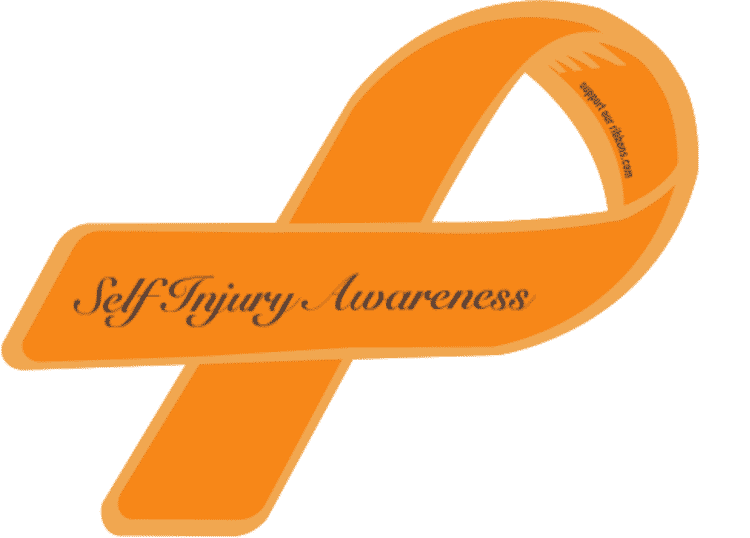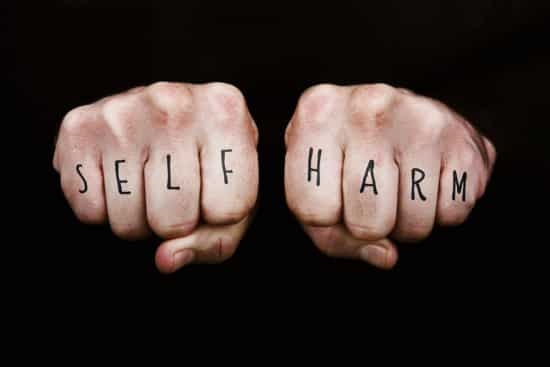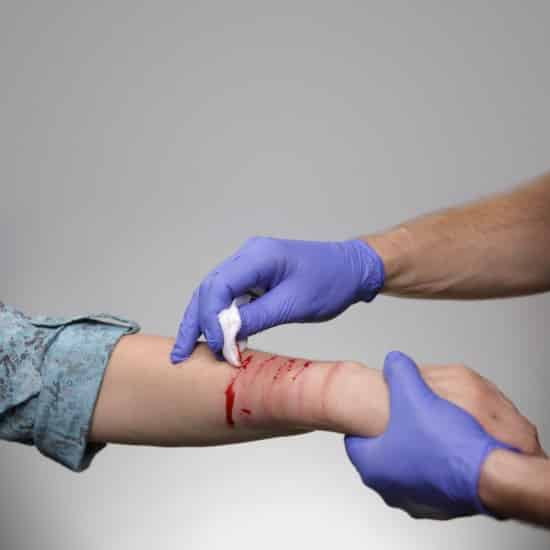
WARNING:Photos contained in this article may trigger cutting. The photos are meant to help parents identify the condition in their children by showing them what cutting looks like. Note that the tips here are known behavioral methods to help cutters manage their behavior but of course, a mental health professional should be consulted in all cases of cutting.
Cutting is the act of cutting the skin as a means of releasing tension or strong emotion and is a kind of Self-Injury (SI). Other forms of self-injury include burning the skin with the end of a cigarette or a hot match, hair-pulling, and alcohol poisoning, but eighty percent of the time, self-injury takes the form of cutting. Cutters can be either boys or girls and most start cutting in their teens.
Ask a teen why she cuts and she’ll say it makes her feel better, makes her feel calmer. A teen may cut as a response to a break-up, exams, hurt, shame, loneliness, rejection, loss, or a feeling of emptiness. Sometimes people who are depressed or suffer from bipolar syndrome become cutters. Cutting can also come with eating disorders or Obsessive Compulsive Disorder (OCD). Cutting, along with other self-injury-type behaviors, may be a red flag for mental health problems that make it hard for people to control their impulses or that make them take risks.
![Auto-Mutilation This is what cutting looks like. By Degagebouche (Own work) [CC BY-SA 3.0 (http://creativecommons.org/licenses/by-sa/3.0)], via Wikimedia Commons](https://parenting.kars4kids.org/wp-content/uploads/2015/06/Auto-Mutilation-e1433767610482.jpg)
This is what cutting looks like. By Degagebouche (Own work) [CC BY-SA 3.0 (http://creativecommons.org/licenses/by-sa/3.0)], via Wikimedia Commons
Some cutters say that cutting helps them feel when they are numb from experiencing a big shock or loss. Other cutters say that the pain from cutting helps them relive the pain of a bad experience. The fresh pain helps them to feel and express their anger.

Cutting is dangerous. Sometimes people misjudge how deeply they cut themselves and they may lose a lot of blood. Infection is always a risk when there is a break in the skin. And then there is the scarring. Cutters usually don’t mean for anything terrible to happen when they cut, but accidents can happen. Using a dirty knife or cutting too far can have a really bad ending. But in general, most cutters aren’t trying to kill themselves. They are usually just looking for relief from emotional pain.

Cutters tend to cut their arms, since the arms are easy to reach and easy to conceal. The scarring from cutting and the need to cover up fresh cuts to hide them from parents’ eyes means cutters may choose to wear long-sleeve shirts, even during the hot summer months. In fact, long-sleeved clothing during hot weather should be a tip-off to parents that something is wrong
Sometimes cutting is complicated. Cutters may feel good looking at the cuts and feel bad as they begin to heal. Sometimes opening the cuts to make them fresh again, makes the cutter feel good again.
Teens may begin cutting when they see their friends doing it. If the friends are part of a crowd they admire and want be a part of, they may think cutting is their “entry” into that social group. Once they begin to cut, the behavior can become an addiction and they will find it hard to stop.
![The telltale marks of cutting By Hendrike (Own work) [GFDL (http://www.gnu.org/copyleft/fdl.html) or CC-BY-SA-3.0 (http://creativecommons.org/licenses/by-sa/3.0/)], via Wikimedia Commons](https://parenting.kars4kids.org/wp-content/uploads/2015/06/Cutting-e1433767819533.jpg)
By Hendrike (Own work) [GFDL (http://www.gnu.org/copyleft/fdl.html) or CC-BY-SA-3.0 (http://creativecommons.org/licenses/by-sa/3.0/)], via Wikimedia Commons
Cutting should be taken care of as soon as possible because it may become a compulsive habit. It’s one thing to help someone who cuts herself once or twice, and another thing to help someone who has been cutting for years: someone who is addicted to cutting. That’s a much harder habit to break.
![Cutting may relieve the feeling of emptiness or loneliness that teens can experience By Originally uploaded by Bkell (Transferred by Przemub) (Originally uploaded on en.wikipedia) [Public domain], via Wikimedia Commons](https://parenting.kars4kids.org/wp-content/uploads/2015/06/Eyes_Of_Skyrens-e1433768377718.jpg)
By Originally uploaded by Bkell (Transferred by Przemub) (Originally uploaded on en.wikipedia) [Public domain], via Wikimedia Commons
Admit To Cutting
So how do you get the cutter to stop cutting? It begins with admitting there’s a problem. Once the cutter is willing to talk about the cutting and to agree it’s a problem, she can take steps to nip the cutting behavior in the bud.
Know The Triggers
If you ask a cutter what makes her want to cut, she’ll almost always know what feelings and situations bring on the urge. And you know what? If it’s something she can avoid, there’s no shame in that. If being with certain people, for instance, makes her want to cut herself, she should stay away from those people. If going to a certain place brings on the feelings and she can avoid that place, let her do so. But cutting is often just a state of mind: a feeling of loneliness, tension, stress, and the like. Being aware of the feelings translates to being able to tackle the desire for cutting.
Fight The Urge
Calming music can help!
https://youtu.be/vpPtVoaBA08
The best way to stop cutting is to do something instead of the cutting that offers the same sort of relief but without self-harm. Here are some examples of things cutters can do instead of cutting:
- Phone a friend for a pleasant chat
- Go for a walk, ride a bike, exercise hard, or just dance like crazy
- Cuddle with the family pet
- Do deep breathing
- Have an ice-cold glass of water
- Take a hot bath or shower but make sure there aren’t any razors lying around
- Listen to soft music
- Do some yoga
- Scribble or doodle on a piece of paper using red ink or paint that you can drip to mimic blood
- Write in a journal and really pour out your heart about what you’re feeling
- Play with play-dough, make bread, or get a rubber ball to squeeze
- Have a cup of tea or hot cocoa
- Go bundle up in bed with a favorite fleece blanket and snuggle up to a stuffed teddy bear
- Rub an ice cube on your skin
- Draw on your arm with a red, felt-tipped pen
- Put a rubber band on your arm and give it a gentle snap when you feel the urge to cut
How about kids who do it because they like the blood and feeling of pain?
Any Substitutions thats less harmful?
Any positive act can be substituted, as long as it doesn’t result in pain or bloodshed. Over time, this would work as cognitive behavioral therapy, and train kids not to desire to see blood or experience pain. Wanting to see blood and experience pain is abnormal. These desires need to be modified through positive acts or therapy.
So your calling me “abnormal” then?
Not at all. I didn’t call anyone “abnormal.”